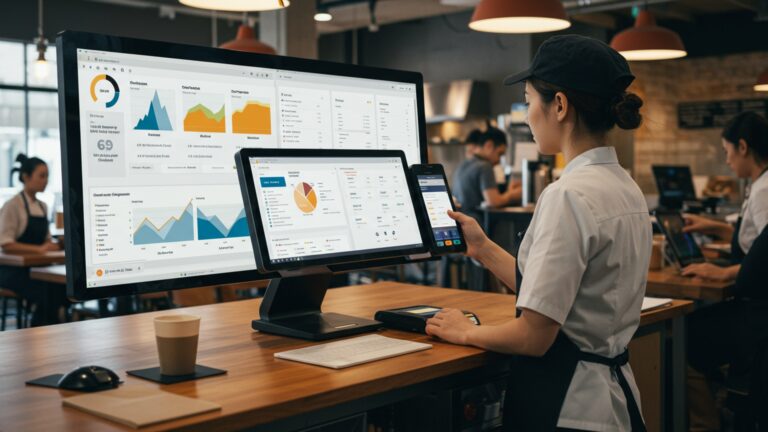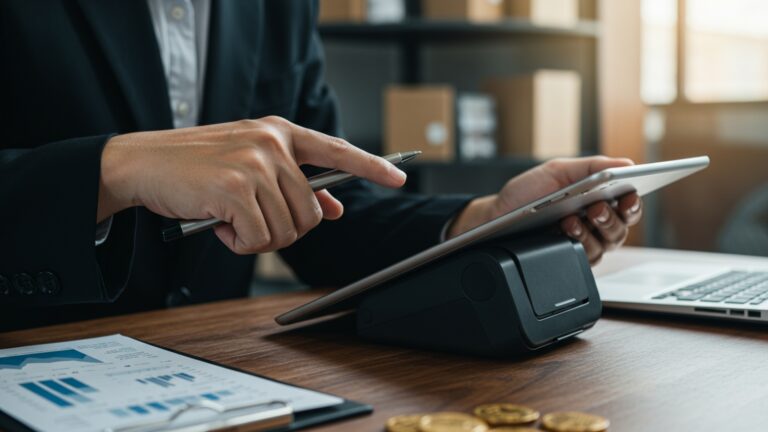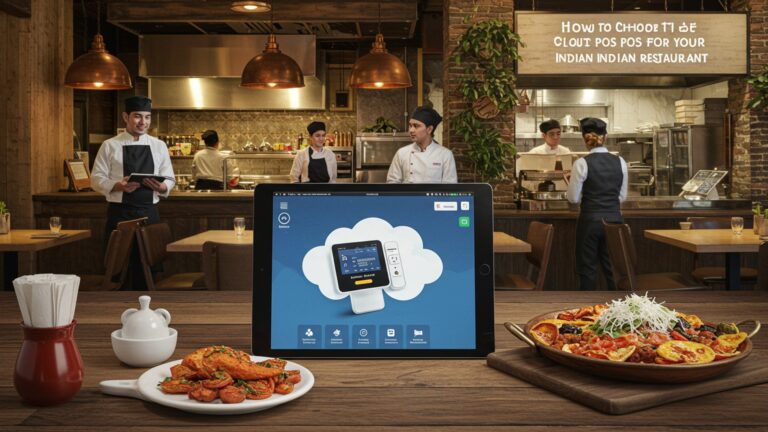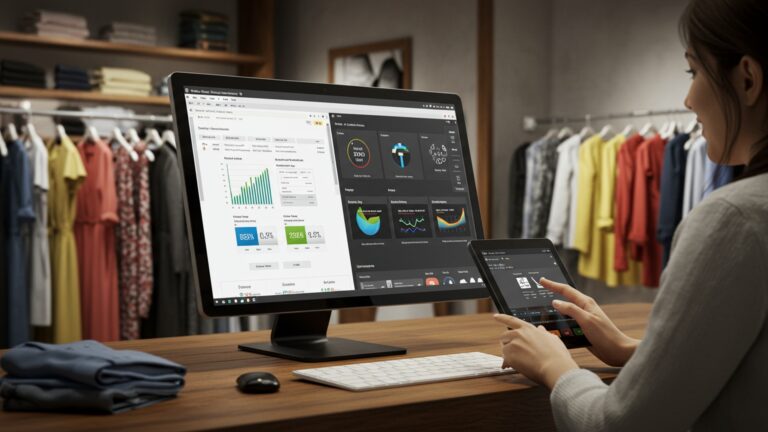How to Choose the Best POS Software for Your Grocery Store A Practical Guide
The bustling aisles of a modern grocery store demand more than just efficient checkout; they require a technological backbone capable of orchestrating complex operations. Selecting the optimal POS software for grocery store environments has transcended mere transaction processing, evolving into a critical strategic imperative. Forward-thinking grocers now leverage advanced systems for real-time inventory management across multiple locations, seamless integration with self-checkout kiosks. sophisticated customer loyalty programs that drive personalized offers. With the surging demand for contactless payments and the shift towards omnichannel retail, a robust cloud-based POS solution must offer not just speed but also deep analytical insights into fresh produce waste, predictive stocking. supply chain visibility, ensuring maximum profitability and an exceptional customer experience in today’s competitive landscape.
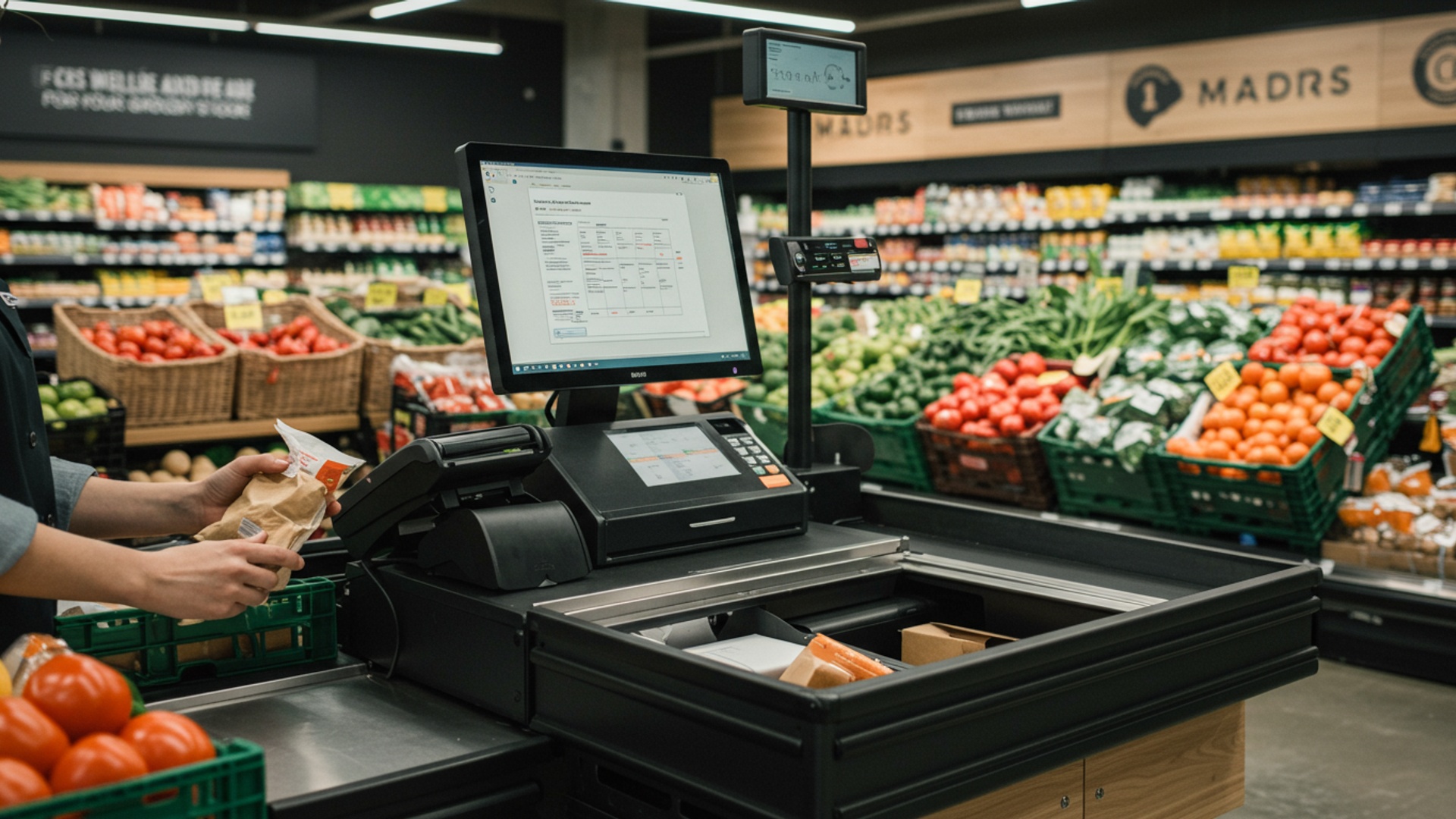
Understanding the Core: What is POS Software for a Grocery Store?
At its heart, a Point of Sale (POS) system is far more than just a cash register. For a grocery store, it’s the central nervous system that orchestrates sales transactions, manages inventory, tracks customer data. streamlines operations. When we talk about pos software for grocery store, we’re referring to the digital brain that powers the hardware—the scanners, card readers, receipt printers. touchscreens—to perform these crucial functions efficiently and accurately. Without robust POS software, a modern grocery store would struggle to keep pace with customer demands, inventory control. financial reporting.
The primary role of POS software is to facilitate the purchase of goods, calculating the total, applying discounts, processing payments. generating receipts. But, its capabilities extend far beyond this basic function. It integrates various aspects of retail management into a single, cohesive system, providing a holistic view of your business performance. This integration is particularly vital for grocery stores, which deal with high transaction volumes, diverse product categories. often perishable goods.
Essential Features Your Grocery Store POS Must Have
Choosing the right pos software for grocery store involves identifying a solution that offers a comprehensive suite of features tailored to the unique demands of the industry. Here are the non-negotiable functionalities:
- Robust Inventory Management
- Customer Relationship Management (CRM) & Loyalty Programs
- Comprehensive Reporting & Analytics
- Employee Management
- Integrated Payment Processing
- Scalability
- Third-Party Integrations
- Hardware Compatibility
This is paramount for grocery stores. The software must track stock levels in real-time, manage product variations (e. g. , organic vs. conventional, different sizes), handle weight-based items (produce, meat), manage vendor details. facilitate purchase order generation. Crucially, it should support perishable goods management, allowing for tracking of expiration dates and first-in, first-out (FIFO) inventory methods.
To foster repeat business, your POS should enable you to capture customer data, track purchase history. implement loyalty programs (e. g. , points, discounts, personalized offers). This allows you to grasp buying patterns and tailor marketing efforts effectively.
Data is power. The software should provide detailed reports on sales performance (by item, category, time of day), employee performance, inventory turnover, profit margins. customer trends. These insights are critical for making informed business decisions, optimizing stock. identifying areas for improvement.
Manage employee shifts, track hours, monitor sales performance per employee. control access levels to different POS functions. This ensures accountability and helps in optimizing staffing.
Seamless integration with various payment methods, including credit/debit cards, mobile payments (Apple Pay, Google Pay), gift cards. even EBT, is essential for customer convenience and efficient checkout.
Your grocery store might grow, or you might open new locations. The POS software must be scalable to accommodate increased transaction volumes, more inventory items. multi-store management capabilities without requiring a complete overhaul.
A truly effective pos software for grocery store should integrate with other vital business tools, such as accounting software (e. g. , QuickBooks, Xero), e-commerce platforms (if you offer online ordering or delivery). potentially specialized deli scales or security systems.
Ensure the software is compatible with a range of hardware, including barcode scanners, receipt printers, cash drawers, customer-facing displays. potentially self-checkout kiosks.
Cloud-Based vs. On-Premise POS: A Key Decision
One of the foundational choices you’ll make when selecting pos software for grocery store is whether to opt for a cloud-based or on-premise system. Each has distinct advantages and disadvantages.
| Feature | Cloud-Based POS | On-Premise POS |
|---|---|---|
| Definition | Software hosted on remote servers, accessed via the internet. Data is stored off-site. | Software installed directly on local servers and computers within your store. |
| Accessibility | Access from anywhere with an internet connection (store, home, mobile). | Access primarily limited to the store network where the software is installed. |
| Cost Structure | Typically subscription-based (monthly/annually). Lower upfront cost. | Higher upfront cost for software license and server hardware. Lower ongoing fees (maintenance). |
| Maintenance & Updates | Managed by the vendor. Automatic updates, minimal IT involvement. | Managed by your internal IT staff or a third-party IT service. Manual updates, potential downtime. |
| Data Security | Managed by the vendor with professional security measures. Relies on vendor’s infrastructure. | Managed by your store. Requires robust internal IT security protocols. |
| Scalability | Highly scalable; easily add or remove users/locations. | Scalability can be complex, often requiring hardware upgrades. |
| Offline Capability | Many offer an offline mode that syncs when reconnected. core functionality relies on internet. | Operates independently of internet connection once installed. |
For most modern grocery stores, especially those looking for flexibility, lower upfront costs. easier management, cloud-based solutions are increasingly popular. But, on-premise solutions can offer greater control and potentially better performance in areas with unreliable internet connectivity, though this comes with higher IT overhead.
Specific Considerations for Grocery Store Operations
Grocery stores have unique operational intricacies that demand specific functionalities from their POS. When evaluating pos software for grocery store, ensure it addresses these:
- Weight-Based Item Management
- Perishables and Expiration Date Tracking
- Returns and Exchanges
- Self-Checkout Integration
- Complex Promotions and Discounts
- Age Verification
Essential for produce, meat. bulk items. The POS should integrate seamlessly with barcode scales to automatically calculate prices based on weight. For example, a customer buying 1. 5 lbs of apples should have the price instantly calculated at checkout.
Beyond basic inventory, grocery stores need to manage items with limited shelf lives. The POS should ideally offer features to track expiration dates, alert staff to expiring products. even support markdown strategies for items nearing their sell-by date to minimize waste.
A streamlined process for handling returns, especially for food items, is crucial. The software should allow for easy processing of refunds, store credit, or exchanges, linking back to the original transaction if possible.
As customer preferences shift, many grocery stores are implementing self-checkout lanes. Your chosen POS software should either natively support self-checkout kiosks or integrate smoothly with third-party self-checkout systems to ensure consistent pricing and inventory updates.
Grocery stores frequently run multi-buy deals (e. g. , “buy one get one free,” “3 for $10”), loyalty program discounts. time-sensitive promotions. The POS must be capable of accurately applying these complex rules at checkout without manual intervention.
For sales of alcohol, tobacco, or other age-restricted products, the POS should prompt cashiers for age verification and potentially integrate with ID scanners for compliance.
Evaluating Vendors: What to Look For
Once you’ve identified the essential features, the next step is to evaluate potential vendors of pos software for grocery store. This goes beyond just the software itself and encompasses the entire support ecosystem.
- Vendor Reputation & Reviews
- Customer Support
- Pricing Structure
- Demo & Trial Periods
- Implementation & Training
Research the vendor’s track record. Look for reviews from other grocery store owners. Are they known for reliability, innovation. strong customer service? Credible sources like industry publications, independent review sites. peer recommendations are invaluable.
This is critical. What kind of support do they offer? Is it 24/7? What are the channels (phone, email, chat, knowledge base)? What’s their typical response time? A downed POS system during peak hours can be catastrophic, so reliable and responsive support is non-negotiable. Ask about their implementation process and ongoing training.
comprehend the total cost of ownership. This includes not just the software subscription (if cloud-based) or license fee (if on-premise). also hardware costs, installation fees, training costs, ongoing maintenance fees. transaction processing fees. Be wary of hidden costs.
Always request a live demo. Better yet, if available, utilize a free trial period. This allows you to test the software with your actual products and processes, giving you a hands-on feel for its usability and functionality. Involve your key staff (cashiers, inventory managers) in these evaluations.
How does the vendor assist with setting up the system, importing your product data. training your staff? A smooth transition is vital. An expert, like John Smith, a retail technology consultant, often advises, “A robust POS system is only as good as its implementation and the team’s ability to use it effectively. Prioritize vendors who offer comprehensive training and support during the rollout phase.”
Real-World Application: Fresh Grocer’s Journey to a Better POS
Consider “Fresh Grocer,” a mid-sized independent grocery store facing increasing competition and operational inefficiencies. Their old, outdated POS system was a basic cash register with limited inventory tracking. Store owner Maria noticed long lines, frequent stockouts of popular items. no way to track loyal customers.
Maria realized she needed a modern pos software for grocery store to revitalize her business. She started by listing her core needs:
- Real-time inventory for perishable goods and automatic reordering.
- Support for weight-based produce and bulk items.
- A customer loyalty program to reward frequent shoppers.
- Detailed sales reports to identify best-sellers and slow-moving items.
- An intuitive interface for her diverse staff.
After researching several cloud-based POS solutions, Maria narrowed it down to two vendors. She requested demos for both, bringing in her store manager and head cashier. They particularly liked one system’s seamless integration with barcode scales and its robust inventory module that could track expiration dates. The vendor also offered a comprehensive training package and 24/7 support, which was a major selling point for Maria, who couldn’t afford downtime.
Six months after implementing the new POS, Fresh Grocer saw remarkable improvements. Stockouts decreased by 30%, sales increased by 15% due to better inventory management and targeted promotions from the loyalty program. checkout times were reduced. Maria’s team found the system easy to use. the detailed reports empowered her to make data-driven decisions about stocking and merchandising. This transformation highlights how the right pos software for grocery store can be a game-changer for profitability and customer satisfaction.
Actionable Steps: Your Checklist for Choosing
To ensure you select the best pos software for grocery store, follow this practical checklist:
- Define Your Specific Needs
- Set a Budget
- Research Top Contenders
- Request Demos and Trials
- Verify Integrations
- Assess Customer Support
- Review Contracts Carefully
- Plan for Implementation and Training
List all the unique requirements of your grocery store, from inventory types (perishables, weight-based) to customer programs and reporting needs.
Determine what you can realistically afford for both initial setup and ongoing costs.
Identify 3-5 POS systems that cater specifically to grocery stores and align with your needs. Read reviews and seek recommendations.
Get hands-on with the software. Test it with your own products and scenarios. Involve your staff in this process.
Confirm that the POS integrates with your existing accounting software, e-commerce platforms, or other critical tools.
grasp their support channels, hours. response times. Good support is invaluable.
Pay close attention to terms, cancellation policies. any potential hidden fees.
Work with the vendor to create a clear plan for setup, data migration. staff training to ensure a smooth transition.
Conclusion
The journey to selecting the ideal POS for your grocery store isn’t merely about finding software; it’s about empowering your operations and enhancing every customer interaction. Remember, the true value lies in a system that not only processes transactions but intelligently manages your specific inventory, from perishable organic produce to daily essentials. My personal advice is always to involve your frontline staff in the demo process – their practical insights into daily challenges, like managing queues during peak hours or quickly looking up obscure product codes, are invaluable. Look beyond basic features to solutions that offer robust analytics for sales patterns and seamlessly integrate with current trends like contactless payments and personalized loyalty programs, which have seen a significant surge recently. Embrace this decision as a strategic investment in your store’s future. A well-chosen POS, one that effortlessly updates real-time stock for your specialty cheeses or streamlines your online ordering pickups, will not just save time but significantly boost customer satisfaction and ultimately, your bottom line. Take that proactive step today; your future self. your thriving grocery business, will undoubtedly thank you for it.
More Articles
How to Choose the Best POS Software to Streamline Your Sales
How to Select the Perfect POS Software for Your Retail Business Needs
How to Implement POS Software for Your Grocery Store A Complete Guide
Mastering Cloud Based POS Software How to Boost Your Business Efficiency
How to Select the Perfect POS Billing Software for Your Business
FAQs
What’s the absolute first thing I should consider when picking POS software for my grocery store?
The most vital thing is to focus on grocery-specific features. You’ll need robust inventory management for perishables and thousands of SKUs, quick checkout capabilities that integrate with scales and barcode scanners. the ability to handle various payment types. Don’t settle for a generic POS; your store has unique operational needs!
How can I tell if a POS system will be easy for my cashiers to learn and use?
Look for an intuitive user interface. A good POS should be simple enough for new employees to pick up quickly with minimal training. Ask the vendor for a demo or a free trial period so your team can actually try it out. User-friendly design significantly reduces errors and speeds up transaction times.
Is inventory management really that big a deal for a grocery store?
Absolutely! For groceries, stellar inventory management is mission-critical. You need to track expiry dates, manage stock levels across thousands of products, handle spoilage. automate reordering. Effective inventory control directly impacts your bottom line by preventing waste and ensuring popular items are always in stock for your customers.
My store already has existing scales and barcode scanners. Will a new POS system work with them?
That’s a very practical question! Always check for hardware compatibility before making a decision. A good grocery POS should integrate seamlessly with common retail hardware like weight scales, barcode scanners, receipt printers. cash drawers. Confirm this with the vendor before committing to avoid extra costs or needing to replace perfectly good equipment.
What kind of customer support should I expect if I run into problems with the software?
Reliable customer support is non-negotiable. Look for vendors offering 24/7 or extensive hours support, especially during your store’s peak operation times. Check if they offer phone, email, or chat support. read reviews about their response times and helpfulness. You don’t want your checkout lines stalled because you can’t get quick assistance.
How much should I expect to pay for a grocery POS. are there hidden fees I should watch out for?
POS pricing varies widely. Look for clear, transparent pricing models. Always ask about monthly subscription fees, one-time setup costs, hardware expenses. any additional charges for integrations, updates, or extra features. Some vendors might charge separately for support, so get a full breakdown of all potential costs to avoid any unwelcome surprises later on.
Can a POS system actually help me build customer loyalty and run promotions effectively?
Definitely! Many modern POS systems include built-in features for customer relationship management (CRM) and loyalty programs. You can track purchase history, offer personalized discounts, manage loyalty points. run targeted promotions. These features are excellent for encouraging repeat business and keeping your customers happy and engaged.

